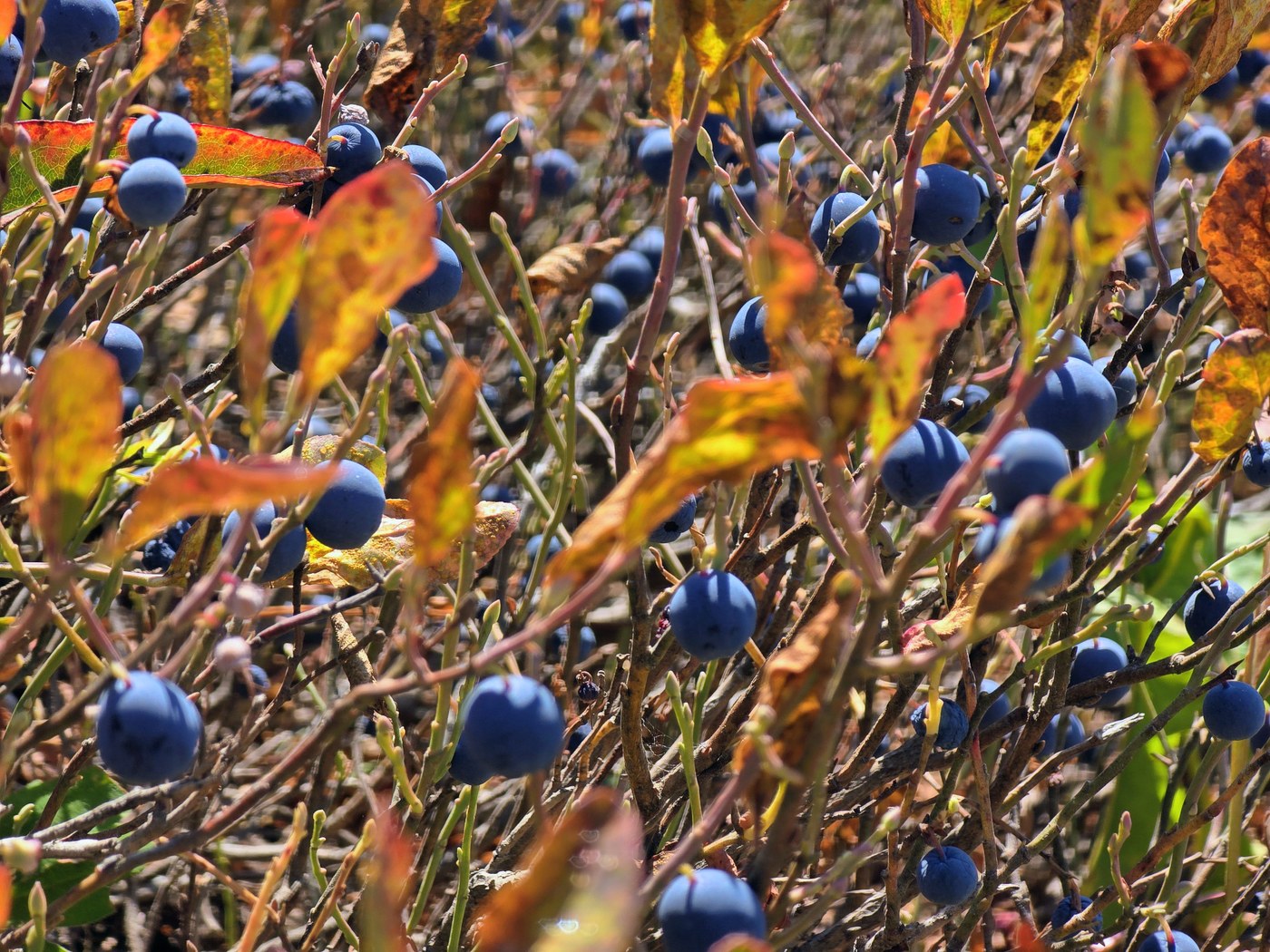A group of 4 headed up to the lookout at 9:30. We saw 2 groups of unsuccessful hunters (bear) coming down in the first mile. On entering the meadows we could see why they had traveled so far to hunt here, there were more blueberries than I have ever seen (photo 1, this was not the thickest clump, once I got 9 berries with one grab). The mountain ash and white rhododendrons are just starting to turn, but many of the berries are in full color (photo 2) and some a little past. The views are outstanding (photo 3). The few flowers (pearly everlasting, harebell, asters, goldenrod) that were blooming had many pollinators and a few crab spiders on them (photo 4). On the lower sections, the bracken ferns and thimbleberry are very thick and colorful. The trail is in great shape. A nice feature is that you only spend a mile in the woods and the tread is gradual and often soft with duff (I think western hemlocks above tend to produce a soft tread below). Both the Suiattle River road and the 5 miles of the Green Mt Road are in pretty good shape with occasional potholes, some fairly large embedded rocks, and a few 3 inch or so loose rocks. Any car could make the journey. We saw many berries, birds, and other animals, thanks Paul for the list below!
BERRIES
Cascades blueberry (Vaccinium deliciosum) — choice — millions of delicious berries
oval-leaf blueberry (Vaccinium ovalifolium) — choice — much less abundant, but ripe
tall / black huckleberry (Vaccinium membranaceum) — choice — also fewer, but ripe
red huckleberry (Vaccinium parvifolium) — choice — not many, but ripe
salal (Gaultheria shallon) — edible — some ripe ones, okay tasting
red elderberry (Sambucus racemosa) — edible — looked underripe
clasping twisted-stalk (Streptopus amplexifolius) — edible with caution — looked
underripe
rosy twisted-stalk (Streptopus lanceolatus) — edible with caution — looked ripe
Sitka mountain-ash (Sorbus sitchensis) — edible but bitter raw, tasty cooked (with
sugar) — looked ripe
bunchberry / dwarf dogwood (Cornus unalaschkensis) — edible raw, insipid to sweet —
looked ripe
queen’s cup (Clintonia uniflora) — mildly toxic — looked ripe
devil’s club (Oplopanax horridus) — poisonous to humans, edible to bears
baneberry (Actaea rubra) — very poisonous — looked ripe
BIRDS
Cooper’s Hawk
Red-tailed Hawk
Northern Harrier
Steller’s Jay
Common Raven
American Robin
Varied Thrush
Northern Flicker
Sooty Grouse
Eurasian Collared-Dove
Vaux’s Swift
American Pipit
Pine Siskin
Red-Breasted Nuthatch
Dark-Eyed Junco
Golden-Crowned Kinglet
White-Crowned Sparrow
Wren, species uncertain
BUTTERFLIES
Mormon Fritillary (Speyeria mormonia) — several near and at the summit
MAMMALS
American pika (Ochotona princeps) — heard and saw several
hoary marmot (Mamota caligata) — saw one large one and heard several whistle
Douglas squirrel (Tamiasciurus douglasii)







Comments
Si_P on Green Mountain
Thank you for the report and specially for the list of berries! I have a question about identifying blueberries vs huckleberries if you could please help!
Red huckleberries are unmistakable. But between blueberries and black huckleberries I get confused.
Those really short bushes (under a foot tall) that carpet some areas and have blueish berries; are those cascade blueberry? I'm guessing that's your first picture but I can't tell the height of the bushes from the picture.
And the taller bushes with "dusty" blueish berries are oval-leaf blueberry?
And the taller bushes with shiny blackish berries are black huckleberry?
Thanks!
Posted by:
Si_P on Sep 19, 2025 11:14 AM
AlpsDayTripper on Green Mountain
Hi, I consulted with Paul and he said you are right on all three, you're better than you think!
Posted by:
AlpsDayTripper on Sep 28, 2025 06:16 PM
Si_P on Green Mountain
Haha, thanks to both of you! Yesterday at Bare mountain I found a new (for me) kind. I can only describe them as Red Blueberries! Fully ripe so it was not like they would later turn blue. They tasted similar to the blue ones but were a little on the larger side…
Posted by:
Si_P on Sep 28, 2025 06:26 PM